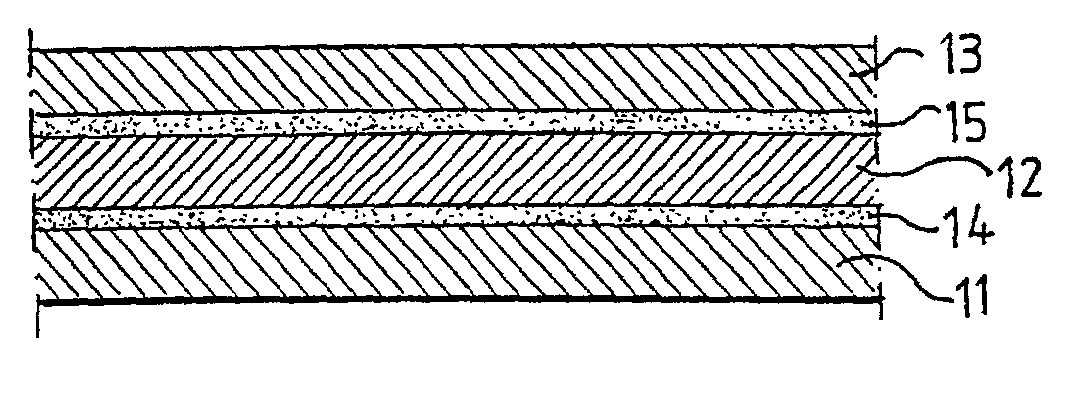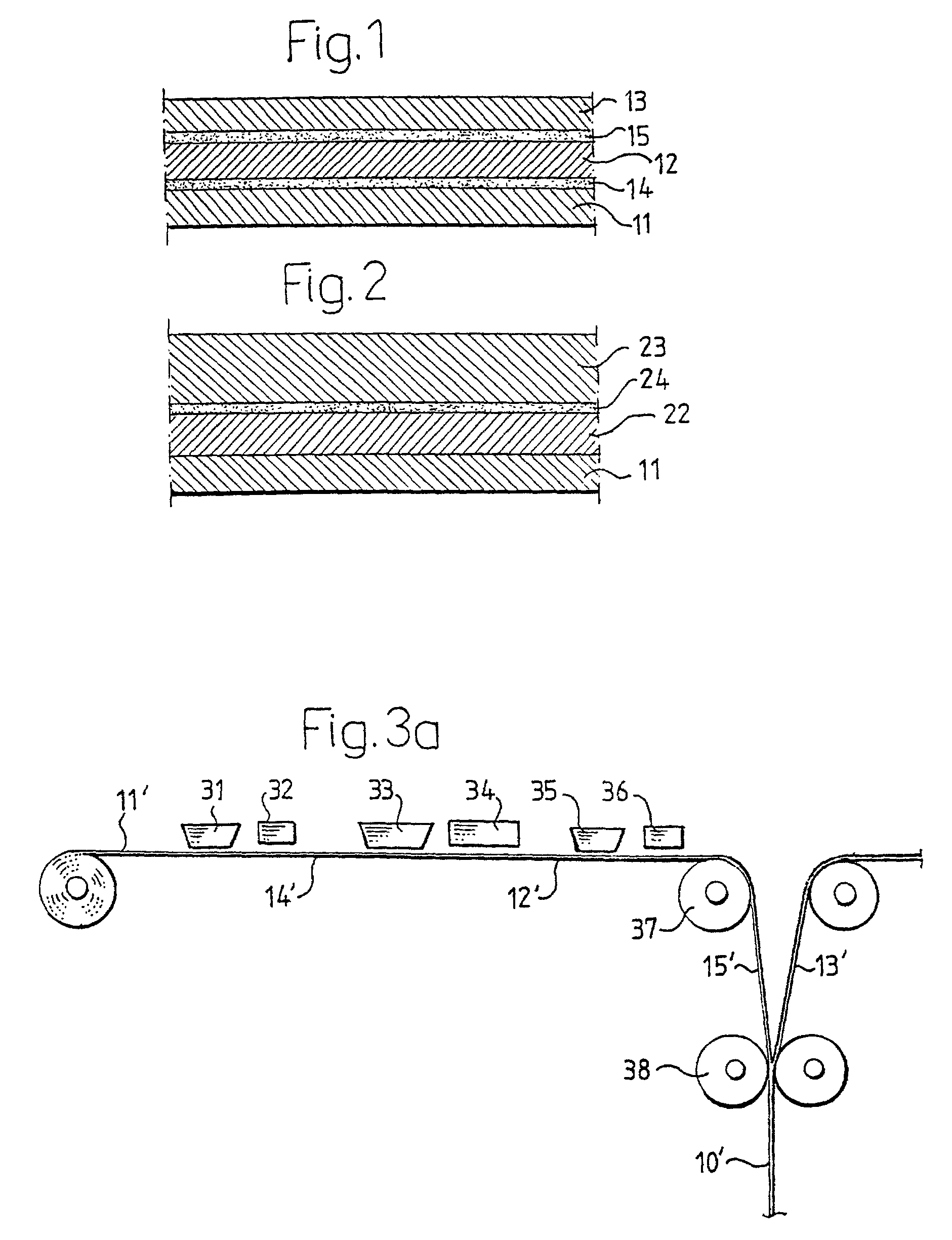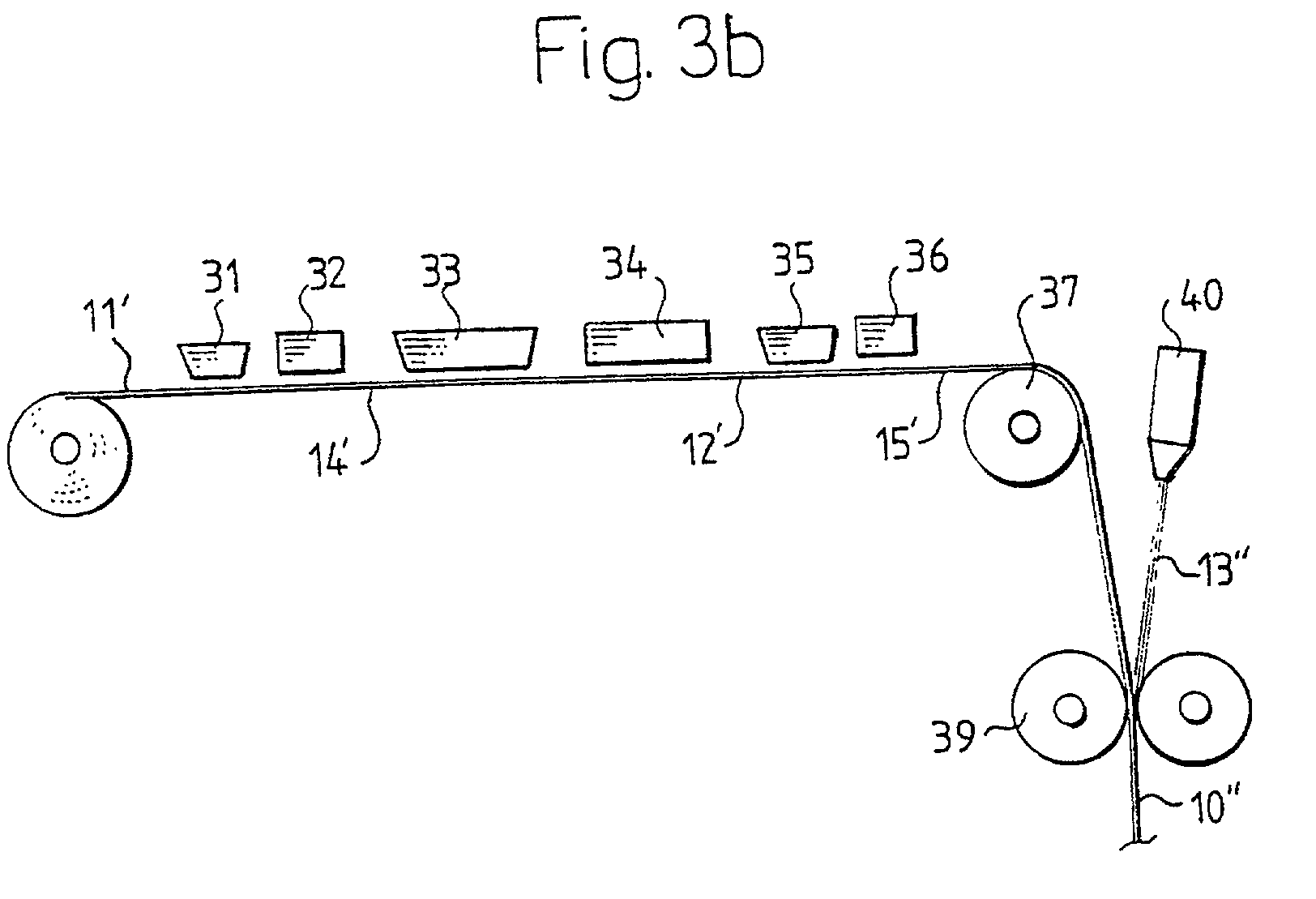Biodegradable packaging laminate, a method of producing the packaging laminate, and packaging containers produced from the packaging laminate
a technology of packaging laminate and biodegradable packaging, which is applied in the field of biodegradable packaging laminate, can solve the problems of poor adhesion to adjacent layers, untightness of packaging containers to oxygen gas penetration, poor adhesion of consumed packaging containers, etc., and achieve excellent gas barrier properties and good adhesion. , the effect of improving adhesion
- Summary
- Abstract
- Description
- Claims
- Application Information
AI Technical Summary
Benefits of technology
Problems solved by technology
Method used
Image
Examples
Embodiment Construction
[0040] Referring to the Drawings, FIG. 1 thus shows a cross section of one embodiment of a packaging laminate 10 according to the present invention. The packaging laminate 10 includes outer liquid barrier layers 11 and 13 and an oxygen gas barrier layer 12 applied between them.
[0041] The liquid barrier layers 11 and 13 preferably consist substantially of polylactide, and the layer 11 is preferably a prefabricated, commercially available polvlactide film.
[0042] The oxygen gas barrier layer 12 includes PVOH with a degree of hydrolysis of at least 90 percent. In order to increase the moisture resistance of the oxygen gas barrier laver, a cross linking agent in the form of glyoxal or glutaraldehyde has been added to the PVOH prior to application.
[0043] The PVOH gas barrier polymaer mav be replaced by a starch or starch derivative polvmer.
[0044] The oxygen gas barrier laver is preferably applied in a quantity corresponding to 1-10 g / m.sup.2, more preferably 3-5 g / m.sup.2.
[0045] The oxyge...
PUM
| Property | Measurement | Unit |
|---|---|---|
| flexible | aaaaa | aaaaa |
| mechanical configurational stability | aaaaa | aaaaa |
| flexibility | aaaaa | aaaaa |
Abstract
Description
Claims
Application Information
 Login to View More
Login to View More - R&D
- Intellectual Property
- Life Sciences
- Materials
- Tech Scout
- Unparalleled Data Quality
- Higher Quality Content
- 60% Fewer Hallucinations
Browse by: Latest US Patents, China's latest patents, Technical Efficacy Thesaurus, Application Domain, Technology Topic, Popular Technical Reports.
© 2025 PatSnap. All rights reserved.Legal|Privacy policy|Modern Slavery Act Transparency Statement|Sitemap|About US| Contact US: help@patsnap.com



